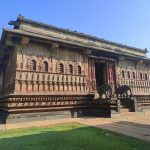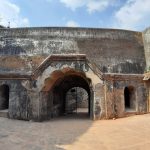In the heart of Karnataka’s lush landscapes lies a hidden gem that seamlessly blends spirituality, history, and architectural brilliance—the Aghoreshwara Temple at Ikkeri. Imagine stepping into a world where the air hums with ancient chants, granite walls whisper tales of a bygone era, and every carved stone echoes the devotion of its creators. This iconic temple is far more than a religious site; it’s a portal to a time when art and faith intertwined to create timeless beauty.
For centuries, this masterpiece has stood as a silent witness to the grandeur of the Keladi Nayakas, inspiring architects, historians, and spiritual seekers alike. Whether you’re drawn to its intricate carvings, seeking a moment of tranquility, or fascinated by its storied past, the Aghoreshwara Temple offers an experience that resonates with the soul.
In this blog, we’ll unravel the mysteries of Ikkeri, delve into the architectural splendor of the temple, and explore nearby attractions that amplify its allure. Prepare to embark on a journey that bridges spirituality, culture, and the timeless elegance of South India.
The Significance of Ikkeri
Ikkeri, meaning “two streets” in Kannada, is a serene village nestled in the lush greenery of Karnataka’s Shivamogga district. Despite its modest size, this village holds immense historical and cultural significance, having served as the illustrious capital of the Keladi Nayakas, a powerful dynasty that ruled parts of Karnataka during the 16th and 17th centuries. The Keladi Nayakas were not just rulers—they were visionaries, patrons of art, culture, and architecture, and their legacy continues to echo through the landmarks they left behind.
At the heart of Ikkeri lies its crown jewel, the Aghoreshwara Temple, a magnificent shrine dedicated to Lord Shiva, worshipped here as Aghoreshwara. This temple isn’t just a place of worship; it’s a spiritual and cultural epicenter that weaves together the threads of devotion, art, and history. The temple exemplifies Shaivism’s deep-rooted spiritual essence while showcasing the architectural brilliance and artistic ingenuity that flourished under the Keladi Nayakas.
The significance of Ikkeri goes beyond its historical role as a capital—it’s a window into a rich and vibrant past. The intricate carvings and well-preserved structures of the Aghoreshwara Temple speak volumes about the mastery of artisans who brought it to life centuries ago. Even today, this sacred space stands as a testament to the Keladi Nayakas’ enduring influence and serves as an inspiration for historians, architects, spiritual seekers, and travelers alike.
In modern times, Ikkeri’s tranquil ambiance, coupled with the profound spiritual energy of its temple, makes it a unique destination—a place where history, spirituality, and the beauty of nature come together in perfect harmony. It invites every visitor to explore its treasures and reconnect with a time when art and devotion walked hand in hand.
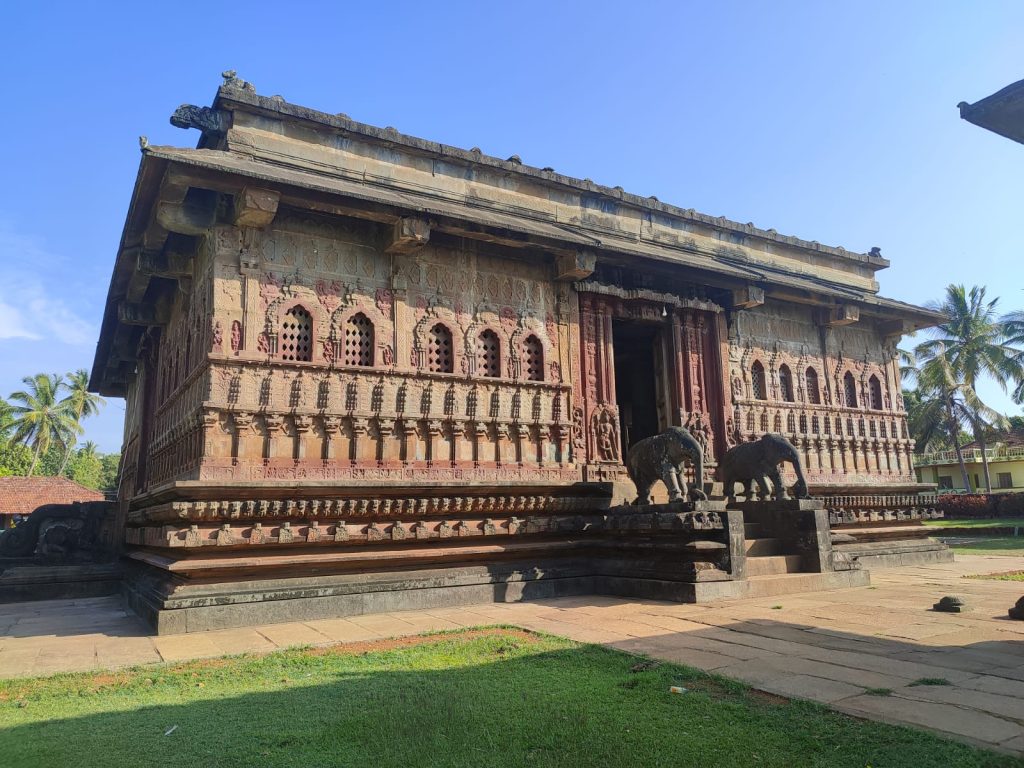
The History Behind the Aghoreshwara Temple of Ikkeri
The Aghoreshwara Temple at Ikkeri is more than just a spiritual site; it is a window into a vibrant historical period shaped by the Keladi Nayakas. Emerging as successors to the illustrious Vijayanagara Empire, the Keladi Nayakas ruled parts of Karnataka and left a profound legacy of cultural patronage, particularly in the realms of temple architecture and art.
Built in the 16th century, Ikkeri’s Aghoreshwara Temple is a testament to the Nayakas’ devotion to Lord Shiva, revered here in his fierce yet compassionate form—Aghoreshwara. This form of Shiva is believed to symbolize the union of destructive power and benevolence, reminding devotees of the cyclical nature of creation and destruction. The temple, therefore, became a center of both spiritual reflection and communal gathering, where faith and artistry were seamlessly integrated.
The Keladi rulers saw their temples as more than places of worship; they were architectural expressions of their devotion and a way to establish cultural identity. The Aghoreshwara Temple, with its intricate carvings and grandeur, reflects this dual purpose. Drawing heavily from the architectural traditions of the Vijayanagara Empire, the Nayakas imbued their temples with local stylistic elements, creating a harmonious fusion of Vijayanagara and Dravidian architecture.
The temple was not just a sacred space for religious activities but also served as a symbol of the Keladi kingdom’s artistic excellence and prosperity. Historians believe the meticulous craftsmanship of the temple underscores the rulers’ desire to immortalize their reign through art that would endure the ravages of time.
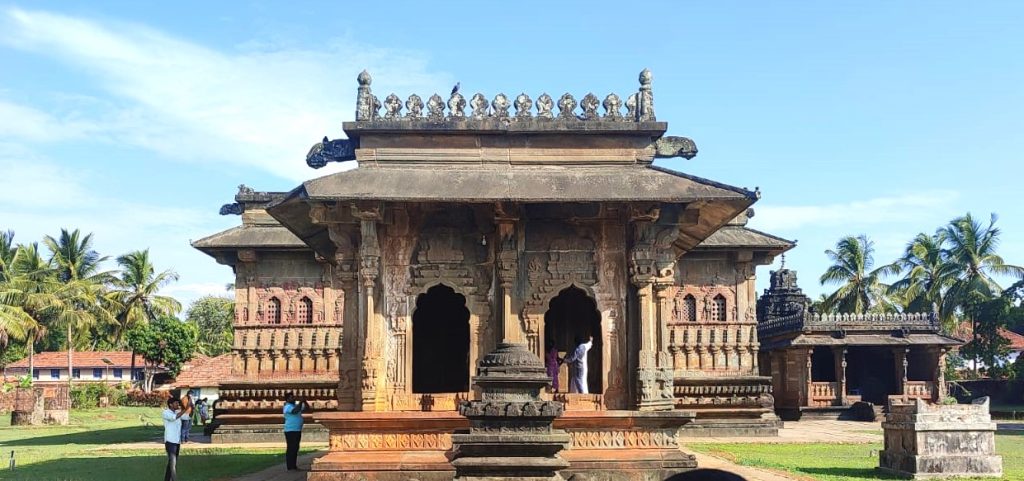
Architecture of Ikkeri’s Aghoreshwara Temple
The Aghoreshwara Temple at Ikkeri is a magnificent example of South Indian temple architecture. Carved predominantly from granite, it stands as a testament to the technical prowess and artistic vision of the era. With its intricate carvings, meticulously planned layout, and attention to detail, the temple is a feast for the eyes of art enthusiasts, architects, and spiritual seekers alike.
Key Features of the Architecture
- Majestic Entrance
The temple welcomes visitors with a grand entrance, setting the tone for the awe-inspiring experience that awaits within. The doorway, framed by intricately carved floral motifs and scenes from Hindu mythology, immediately commands attention. These carvings narrate tales from sacred texts like the Ramayana and Mahabharata, weaving spiritual significance into the very fabric of the temple. The precision of the chiseling and the depth of the relief work demonstrate the artisans’ exceptional skill. - Intricate Carvings
The walls, pillars, and ceilings of the temple are adorned with elaborate carvings that captivate onlookers. The sculptures depict deities such as Shiva, Parvati, Ganesha, and Vishnu, along with celestial beings, animals, and scenes from nature. Each carving tells a story, inviting visitors to immerse themselves in the mythological and cultural narratives of the time.
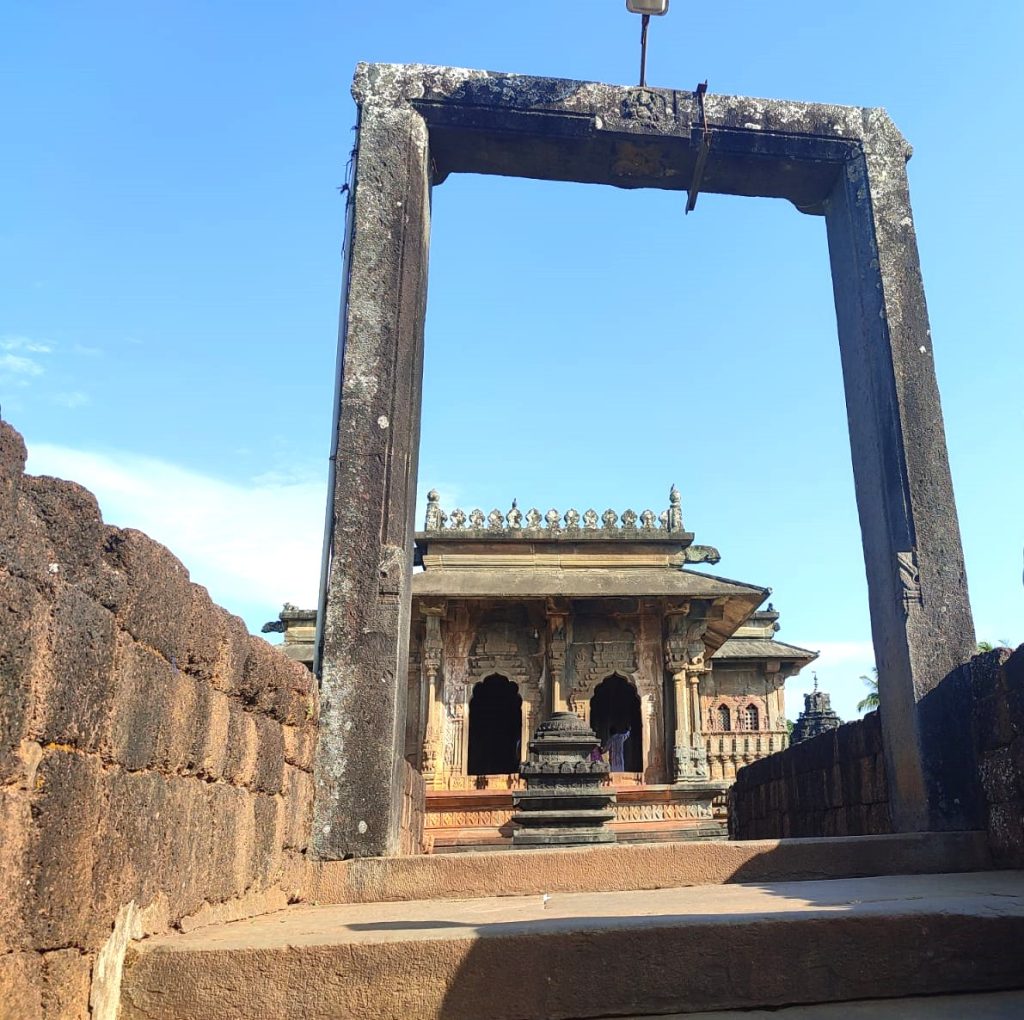
One of the most remarkable features is the depiction of Yalis, mythical lion-like creatures that symbolize protection and power. These sculptures, with their intricate detailing and dynamic postures, not only serve a decorative purpose but also reflect the symbolic importance of safeguarding sacred spaces.
- Shikhara (Vimana)
The towering Shikhara, or Vimana, above the sanctum sanctorum is a defining feature of the temple. This pyramidal structure is intricately designed with layers of decorative motifs, culminating in a kalasha (a sacred pot-like structure) at the top. The Shikhara not only enhances the temple’s visual appeal but also embodies the spiritual aspiration of reaching the heavens. - Nandi Mantapa
A highlight of the temple is the beautifully sculpted Nandi Mantapa, housing a massive statue of Nandi, Lord Shiva’s devoted mount. Carved from a single block of granite, the Nandi statue exudes a serene yet commanding presence. The detailing on Nandi’s ornaments and posture reflects the extraordinary skill of the artisans. The Nandi Mantapa is strategically placed, allowing devotees to pay their respects before entering the sanctum sanctorum. - Temple Tank
Adjacent to the temple lies a temple tank, an essential element of South Indian temple complexes. This water reservoir not only serves a ritualistic purpose, enabling devotees to purify themselves before entering the temple but also enhances the overall aesthetic and spiritual ambiance of the site. Surrounded by steps carved from stone, the tank offers a tranquil space for meditation and reflection.
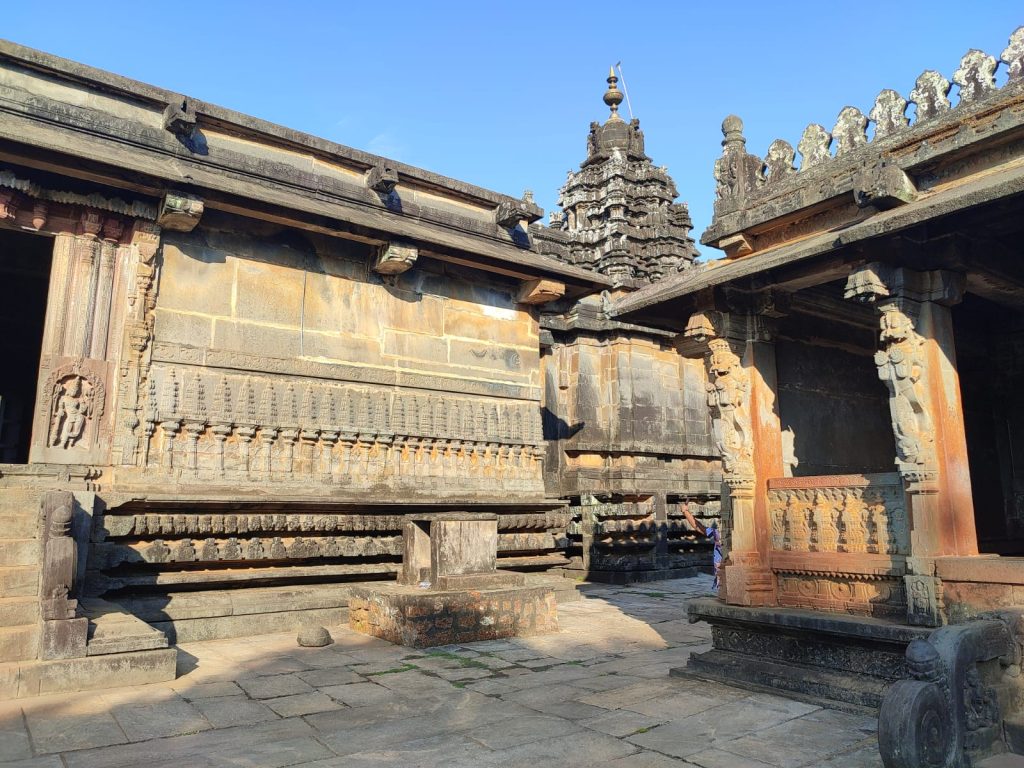
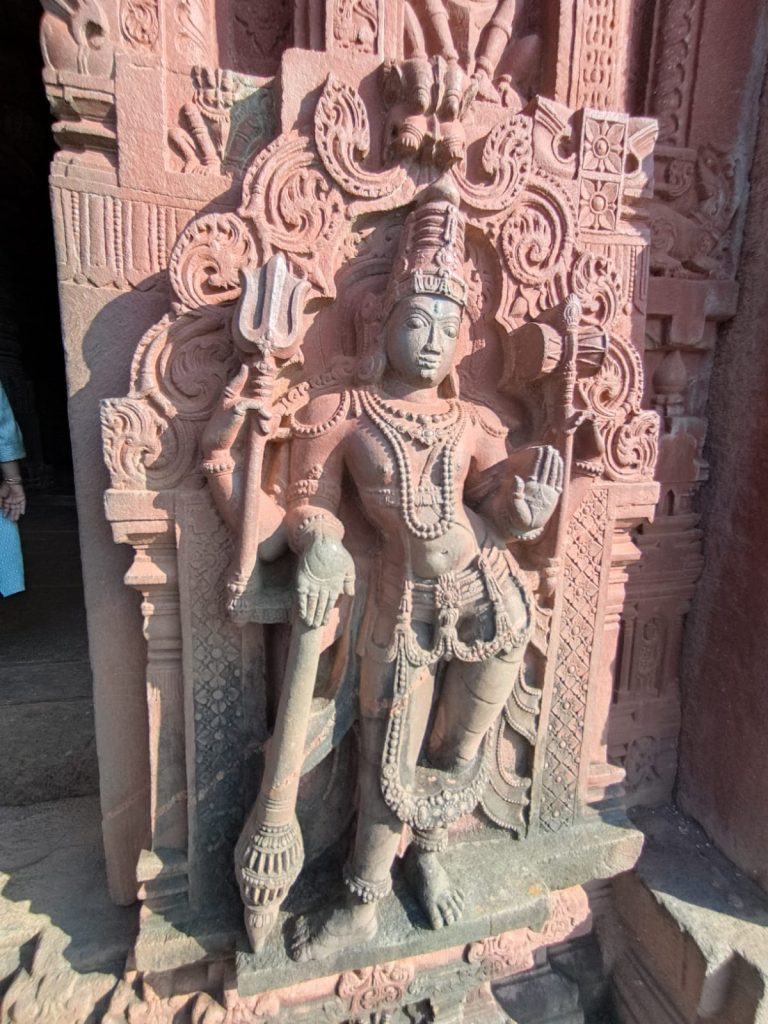
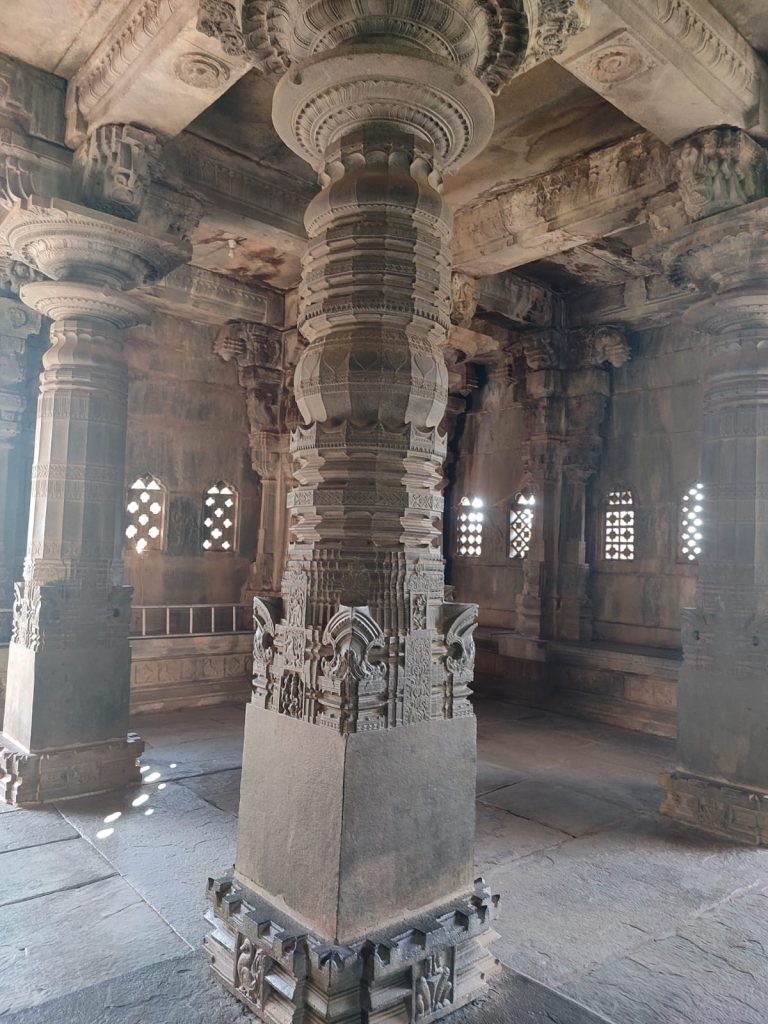
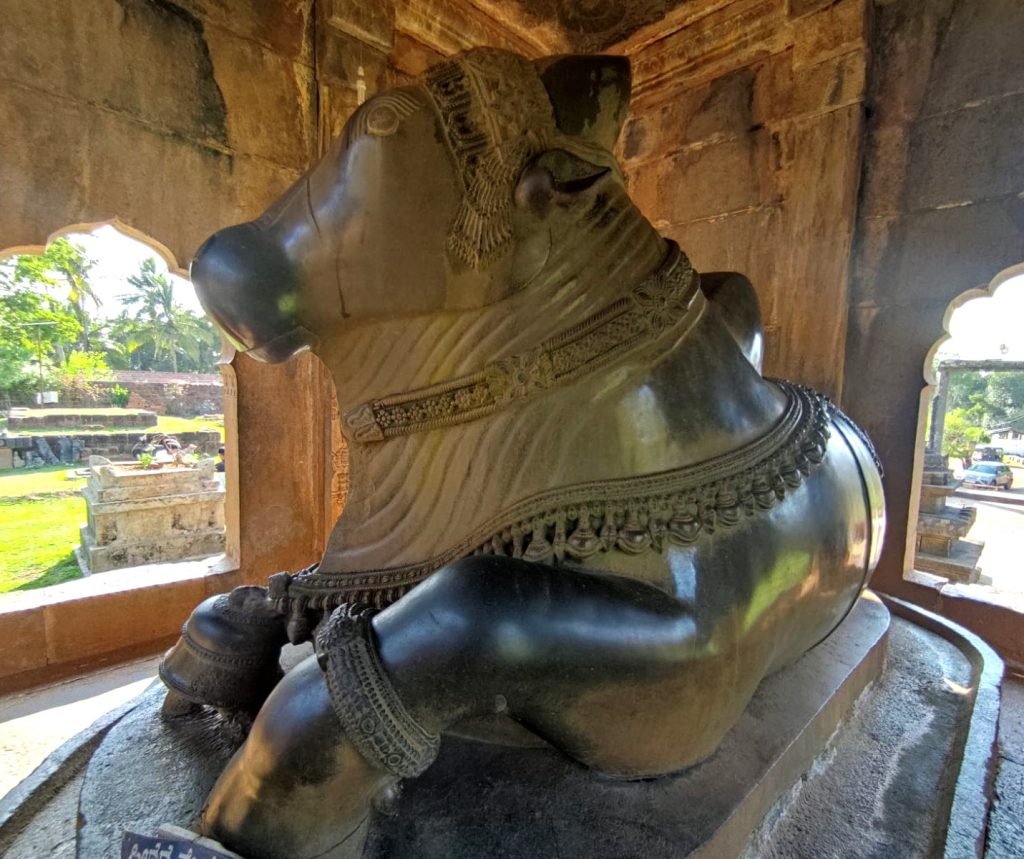
Layout and Spatial Harmony in Ikkeri’s Aghoreshwara Temple
The temple layout of Aghoreshwara Temple at Ikkeri is a marvel of spatial planning. Designed to create a sense of progression from the material to the divine, the structure leads visitors through successive spaces—each with increasing levels of sanctity. From the outer courtyard to the sanctum, every element is meticulously aligned to reflect the cosmic order, reinforcing the spiritual purpose of the temple.
The interplay of light and shadow within the temple enhances its mystique. Strategically placed openings allow sunlight to filter through, illuminating specific carvings and creating an ethereal effect. This careful manipulation of light underscores the artisans’ deep understanding of aesthetics and symbolism.
Cultural and Spiritual Significance
The Aghoreshwara Temple at Ikkeri is not just an architectural masterpiece but also a vibrant center of spirituality and culture. The temple’s dedication to Lord Shiva in his Aghoreshwara form highlights the profound philosophical concepts associated with Shaivism, such as the cyclical nature of creation and destruction.
For centuries, the temple has been a place of pilgrimage, drawing devotees from far and wide. Its serene surroundings and spiritual energy provide a space for introspection and connection with the divine. Festivals like Maha Shivaratri are celebrated with great fervor, filling the temple with an atmosphere of devotion and joy.
The temple also serves as a living repository of the region’s cultural heritage. Its sculptures and inscriptions offer valuable insights into the artistic, religious, and social practices of the Keladi period.
Nearby Attractions
A visit to Ikkeri is incomplete without exploring the surrounding attractions that add to the region’s charm. Here are some must-visit places near the Aghoreshwara Temple:
- Keladi Rameshwara Temple
Located just a few kilometers from Ikkeri, this temple is another architectural gem built by the Keladi Nayakas. Dedicated to Lord Shiva, the temple features a unique blend of Hoysala, Dravidian, and Vijayanagara styles. - Jog Falls
A short drive from Ikkeri takes you to the breathtaking Jog Falls, one of India’s highest waterfalls. Surrounded by dense forests, this natural wonder is a perfect destination for nature enthusiasts. - Sigandur Chowdeshwari Temple
Nestled amidst serene surroundings, this temple dedicated to Goddess Chowdeshwari is known for its spiritual energy and scenic beauty. The ferry ride across the Sharavathi River to reach the temple is an added attraction. - Varadamoola
The birthplace of the River Varada, Varadamoola is a picturesque spot that offers tranquility and a chance to connect with nature. - Sharavathi Valley Wildlife Sanctuary
For those who love the outdoors, this sanctuary is a haven of biodiversity. Home to various species of flora and fauna, it offers opportunities for trekking, birdwatching, and exploring nature trails.
The Best Time to Visit Ikkeri
The best time to visit Ikkeri is during the cooler months, from October to March, when the weather is pleasant and perfect for exploring the region. During this period, the temperature is moderate, ensuring a comfortable experience as you walk through the intricate carvings of the Aghoreshwara Temple and soak in the spiritual ambiance.
Visiting Ikkeri during the post-monsoon season (October–December) is particularly enchanting. The rains breathe life into the surroundings, with lush greenery, glistening foliage, and vibrant rivers enhancing the natural beauty of the area. This creates a serene and picturesque setting that complements the grandeur of the temple.
If you’re a culture enthusiast, consider planning your visit during Maha Shivaratri, which usually falls between February and March. During this time, the temple comes alive with celebrations, rituals, and spiritual fervor, offering a unique opportunity to experience the deep-rooted traditions of the region.
How to Reach Ikkeri
Ikkeri is well-connected by road and can be easily accessed from major cities in Karnataka, making it a convenient destination for travelers. Here’s how you can reach this architectural marvel:
By Air
The nearest airport to Ikkeri is the Mangalore International Airport, located approximately 180 kilometers away. From the airport, you can hire a taxi or take a bus to reach Ikkeri. For international travelers, Mangalore serves as the most accessible point of entry.
By Rail
The closest railway station is Sagara Jambagaru, situated just 6 kilometers from Ikkeri. This station is well-connected to major cities like Bengaluru and Shivamogga. After reaching Sagara Jambagaru, you can easily find local taxis or auto-rickshaws to take you to the temple.
By Road
Ikkeri is easily accessible by road from various parts of Karnataka. If you’re traveling from Shivamogga (85 km) or Bengaluru (345 km), you can opt for state-run buses, private buses, or taxis. The roads are well-maintained, ensuring a smooth and scenic drive through the countryside.
For a better understanding of the route and to plan your journey seamlessly, check out the map provided below, which highlights the easiest way to reach Ikkeri from your location.
Whether you choose to fly, take a train, or drive, the journey to Ikkeri offers glimpses of Karnataka’s picturesque landscapes, ensuring that the trip itself is as enriching as the destination.
Why Ikkeri Inspires Visitors
Ikkeri’s Aghoreshwara Temple transcends the definition of a mere religious site. It is a profound blend of art, history, and spirituality, weaving together narratives that appeal to a diverse range of visitors. The temple stands as a timeless ode to the visionary artistry of the Keladi Nayakas, whose legacy continues to inspire generations.
The intricate craftsmanship found in every corner of the temple reflects the unmatched dedication of artisans who turned granite into a symphony of patterns, deities, and stories. Every carving tells a tale — whether it’s a mythological scene, a divine figure, or a delicate floral motif — all of which come together to showcase the artistic prowess of an era long gone. For architecture enthusiasts, the temple’s details offer endless inspiration and admiration, showcasing how design can seamlessly integrate beauty and function.
For history buffs, Ikkeri unfolds like a book, with its roots embedded in the reign of the Nayakas, who succeeded the Vijayanagara Empire. The temple represents an important chapter in Karnataka’s historical tapestry, where the rulers not only promoted spirituality but also established themselves as patrons of art and culture.
However, the magic of Ikkeri doesn’t end with its history or architecture. It’s the spiritual aura that truly captivates every visitor. The deity, Lord Shiva in his Aghoreshwara form, represents a harmonious blend of power and compassion, invoking a sense of calm and introspection. Whether you are performing rituals, meditating in the temple courtyard, or simply gazing at the Nandi statue, you can feel an undeniable sense of tranquility and connection.
For those seeking peace of mind, Ikkeri offers an escape from the chaos of modern life. Surrounded by lush greenery, serene landscapes, and a rich cultural legacy, the temple becomes a sanctuary where visitors can reconnect with themselves and the world around them. Be it an architecture lover, a history enthusiast, or a spiritual seeker, Ikkeri leaves a profound and lasting impression on all who visit.
Conclusion
The Aghoreshwara Temple of Ikkeri is much more than an ancient architectural marvel. It is a timeless treasure that speaks volumes about Karnataka’s spiritual and cultural richness. Nestled in a serene setting, the temple invites travelers to embark on a journey that’s as much about inner peace as it is about experiencing the grandeur of history and art.
Its architectural brilliance showcases the genius of the Keladi Nayakas, whose legacy is preserved in every carved stone and intricate detail. From the towering Shikhara to the meditative calm of the temple tank, every aspect of the temple reflects an era of excellence and devotion. The historical significance of Ikkeri allows visitors to step back in time and witness the confluence of Vijayanagara and Dravidian architectural styles.
But perhaps what makes Ikkeri truly unique is its ability to inspire peace, introspection, and a sense of wonder. Standing in the shadow of the ancient Nandi statue or walking through the intricately carved halls, visitors are reminded of the deep connection between spirituality, art, and the natural world.
For pilgrims, the temple offers a sacred space to worship and meditate. For history enthusiasts, it unravels tales of bygone eras. For travelers and nature lovers, it provides a retreat into tranquility and beauty. Ikkeri is not just a destination — it’s an experience, one that touches the mind, heart, and soul in ways that are hard to describe yet impossible to forget.
Whether you’re seeking inspiration, peace, or a chance to marvel at the wonders of human creativity, Ikkeri promises an unforgettable journey. A visit to this sacred site is not just about seeing the temple but about feeling its essence — a perfect harmony of beauty, spirituality, and serenity that stays with you long after you leave.
FAQs
- What is the best time to visit the Aghoreshwara Temple?
The ideal time to visit is during the winter months (November to February) when the weather is pleasant. Festivals like Maha Shivaratri are particularly special. - Is there an entry fee for the temple?
No, the temple does not charge an entry fee, making it accessible to all visitors. - How far is Ikkeri from major cities?
Ikkeri is approximately 75 km from Shimoga and 370 km from Bengaluru. It is well-connected by road. - Are there accommodation options near Ikkeri?
Yes, nearby towns like Sagar and Shimoga offer a range of accommodation options, from budget to mid-range hotels. - Can photography be done inside the temple?
While photography of the exterior is usually permitted, it’s best to inquire locally about interior photography guidelines.

